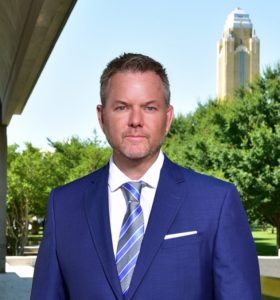What’s Causation and How do I Prove It?

In a personal injury claim, a plaintiff has to show that the defendant caused their harm to be able to recover damages.
This concept is called “causation,” and it is one of the four elements of a negligence claim.
Table of Contents
How Does Causation Work in Texas?
In Texas, the defendant’s conduct must be the cause of the plaintiff’s injury. There are two components of causation – cause-in-fact and proximate causation. Both must be satisfied to establish causation.
A plaintiff establishes cause-in-fact when the defendant’s conduct was a substantial factor in bringing about the plaintiff’s injuries. In other words, without the defendant’s conduct occurring, the harm would not have happened.
The foreseeability test asks whether the defendant should have reasonably anticipated the results of their conduct.
Both of these components of proximate cause seem straightforward, but they can get complicated quickly.
Cause-In-Fact
Cause-in-fact, or actual causation, can be difficult for lawyers and jurors alike. This difficulty manifests itself in several distinct forms.
Scientific Connection
Take the case of a plaintiff who gets skin cancer. He’s in a hotel room and opens a window, which has a broken piece of glass in it, and a shard of glass falls and cuts his forehead. The wound does not heal, and two years later he contracts skin cancer on his forehead. Scientific expert testimony at the trial establishes that there was a one in one hundred chance that the cut from two years ago could have caused the cancer.
So, the question is, was the hotel’s failure to repair a broken window the cause-in-fact of the plaintiff’s skin cancer? There’s possibly a scientific connection, but is it enough? Even after hundreds of years of jurisprudence, scenarios like this illustrate the continued difficulty lawyers and jurors encounter over causation.
What Exactly Caused the Injury?
The following case occurred over a hundred years ago, but the dilemma it presents is relevant to causation today. The plaintiff contracted typhoid from drinking water provided by a municipality. He sued the municipal defendant, alleging that the water was contaminated.
Evidence at trial showed the water was intermingled with sewage and could have caused typhoid. But the plaintiff also could have contracted typhoid from other sources at the time, including eating contaminated vegetables or consuming shellfish.
So, was the defendant responsible? The contaminated water could have been the cause-in-fact of typhoid, but was it? This is another example of how cause-in-fact is not so simple.
Who Was Responsible for the Injury?
Assume the plaintiff has LASIK eye surgery. Two weeks later, she is driving when a drunk driver smashes into her car. She hits her head against the steering wheel and suffers a serious back injury that requires hospitalization. A week later, after being discharged from the hospital, the plaintiff develops loss of vision and chronic pain in her eyes. She sues the doctor who performed the LASIK surgery and the drunk driver for her eye problems.
Medical testimony at trial establishes that the LASIK surgery alone could have caused the injury, or the head injury alone could be responsible, or both. So, was medical malpractice or drunk driving the cause-in-fact of the eye issues? This is one more example of how complicated causation can be.
Foreseeability
It’s not enough if the defendant was the cause-in-fact of an injury – the harm must also have been reasonably foreseeable to the defendant. In other words, liability is limited to risks created by the defendant’s negligent conduct. The most famous case illustrating this concept is Palsgraf v. Long Island Railroad.
The plaintiff was standing on a railroad platform when a train stopped at the station. A man ran to catch the train but nearly fell. Two railroad employees tried to prevent the prospective passenger from falling. During this attempt, the passenger dropped a package he was carrying. It turns out there were fireworks inside. When the package hit the ground, it exploded with such force that it caused some scales to fall and strike the plaintiff, who was standing a fair distance away. She sued the railroad, claiming that the railroad’s employees (the ones who tried to stop the passenger from falling) were negligent in their attempt to help.
Plaintiff proved that the railroad employees were negligent in their assistance to the passenger. But what about foreseeability? It seems that the foreseeable risk of negligently preventing a passenger from falling on the platform would be limited to injury to those assisting and the passenger – not someone at the other end of the platform.
The jury disagreed, but on appeal, the court decided that the harm created by the defendant’s conduct was not foreseeable.
Help is Here for You
All elements of a personal injury claim can be challenging to prove, but causation can be the most problematic. Contact our law office in Fort Worth, TX online or call us at (817) 420-7000 to speak with an experienced personal injury attorney at Stephens Law Firm today. They understand the intricacies of causation and how to prove it.


